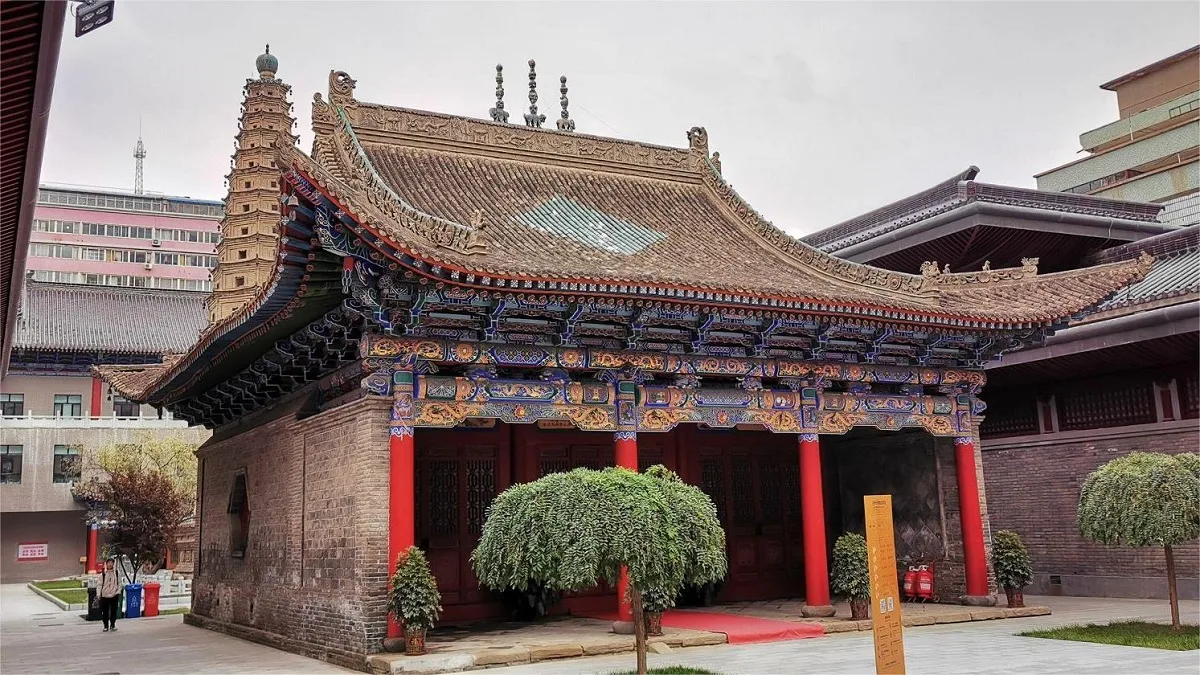Lanzhou Museum (兰州市博物馆, Lanzhou City Museum), a national first-class museum, was established in 1984 on the site of the ancient Baiyi Temple from the Ming Dynasty. It occupies an area of 4,700 square meters, with a total building area of nearly 5,800 square meters, including over 4,000 square meters of exhibition halls and 700 square meters of storage space.
The museum’s collection comprises 12,633 artifacts, including 53 first-grade national treasures, 82 second-grade, and 698 third-grade cultural relics. The collection features a diverse array of items categorized by material, such as pottery, porcelain, metals, stone, jade, and paper. Particularly notable are the painted pottery pieces from the Majiayao Culture, calligraphy and paintings by famous local figures from the Ming and Qing Dynasties, and artifacts from the Baiyi Temple pagoda.
One of the museum’s highlights is a painted pottery drum from the Machang phase of the Majiayao Culture, recognized as one of the earliest known percussion instruments in China. Another significant artifact is a large painted pottery jar from the Majiayao type, standing 63 cm tall and 56 cm wide at the shoulder, making it one of the largest painted pottery pieces discovered to date. Other remarkable items in the collection include a Western Zhou bronze vessel, Han Dynasty writing paper, Tang Dynasty tri-colored cloud-toed shoes, a late Qing Dynasty green-glazed ceramic bottle with embossed decoration, a Ming Dynasty white porcelain statue of Prince Su, and a suit of armor from the Lutusi.
The Baiyi Temple Pagoda, housed within the museum, is renowned for its historical and artistic value. This solid brick pagoda stands approximately 30 meters high. The base is a square structure with staggered teeth, measuring 7 meters on each side and 2.8 meters high, adorned with floral carvings on all four sides. The lower part of the pagoda is an inverted bowl shape, 8 meters high with a maximum diameter of 6 meters. On the south side, a niche connected to the base originally housed three Buddha statues. The upper part of the pagoda is an octagonal cone, 18.5 meters high, with 12 densely spaced eaves, an unusual even number for such structures in China. Each of the eight faces at each level has a niche with a Buddha statue, totaling 96 statues, and each corner of each level has a wind chime, also totaling 96. The pagoda’s pinnacle is about 1 meter high and shaped like a jewel, made of metal coated with copper.
Lanzhou Museum not only preserves and showcases these priceless artifacts but also provides a comprehensive look into the rich cultural heritage of the region. The museum serves as an important center for cultural preservation, education, and research, attracting visitors and scholars interested in the history and culture of Lanzhou and beyond.
Basic Information
| Estimated Length of Tour | 1 – 2 hours |
| Ticket Price | Free |
| Opening Hours | 9.00 – 17.00; Last admission: 16.30 Closed on Mondays |
| Telephone Number | 0086-0931-8828555 |
Location and Transportation
Lanzhou Museum is located at 240 Qingyang Road, Chengguan District, Lanzhou City, Gansu Province, China. To get there, you can choose one of the following ways:
Bus: Take bus 1, 9, 56, 58, 83, 85, 109, 115, 138, 142, or Q87, get off at Jingning Cross Stop (靖宁路口站), and walk about 200 meters to the east to reach the museum.
Metro: The closest metro station to Lanzhou Museum is Dongfanghong Sqaure (东方红广场) on line 1 and line 2. After getting out of the station from Exit X1, walk about 300 meters to the west to reach the museum.








